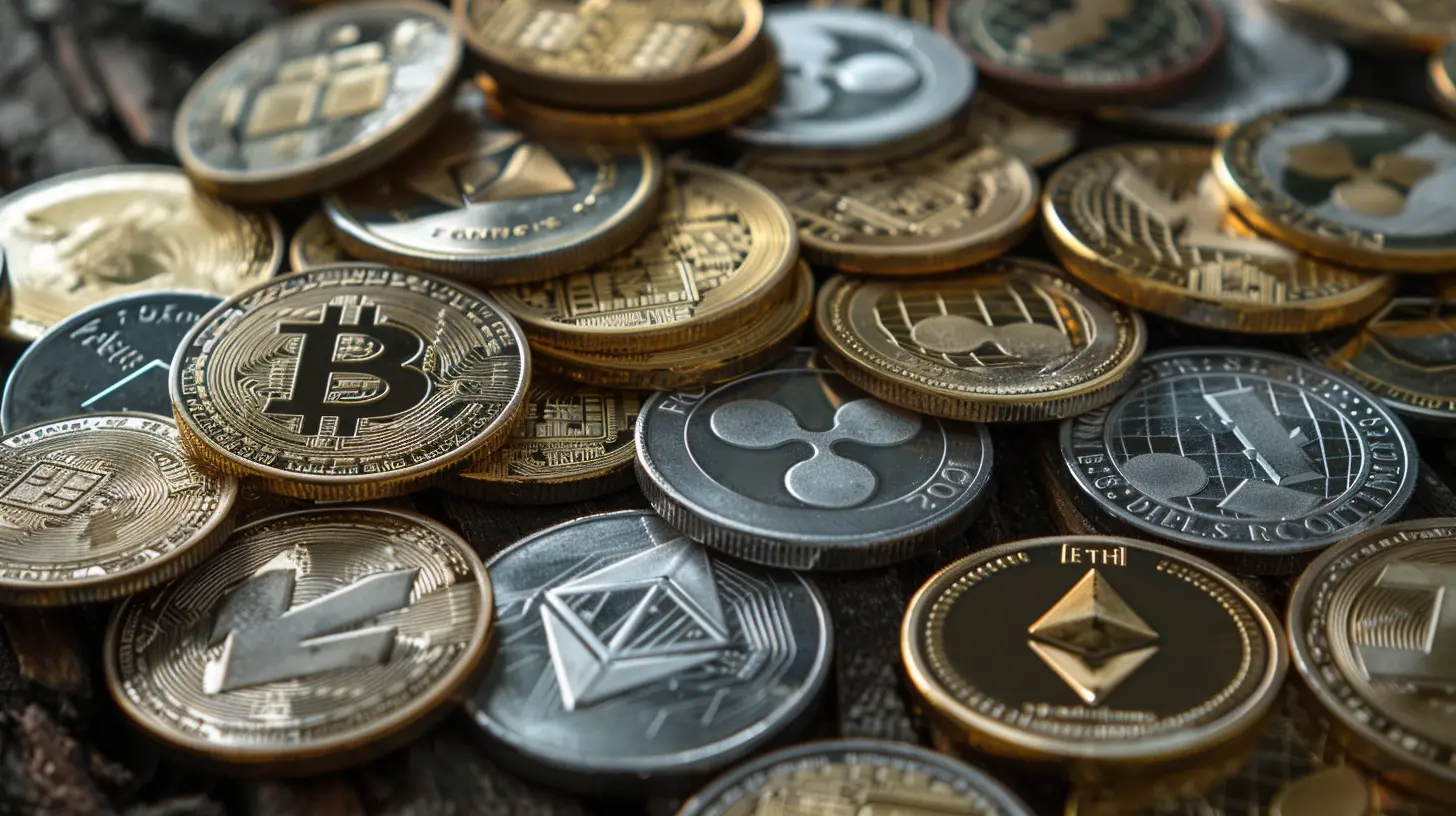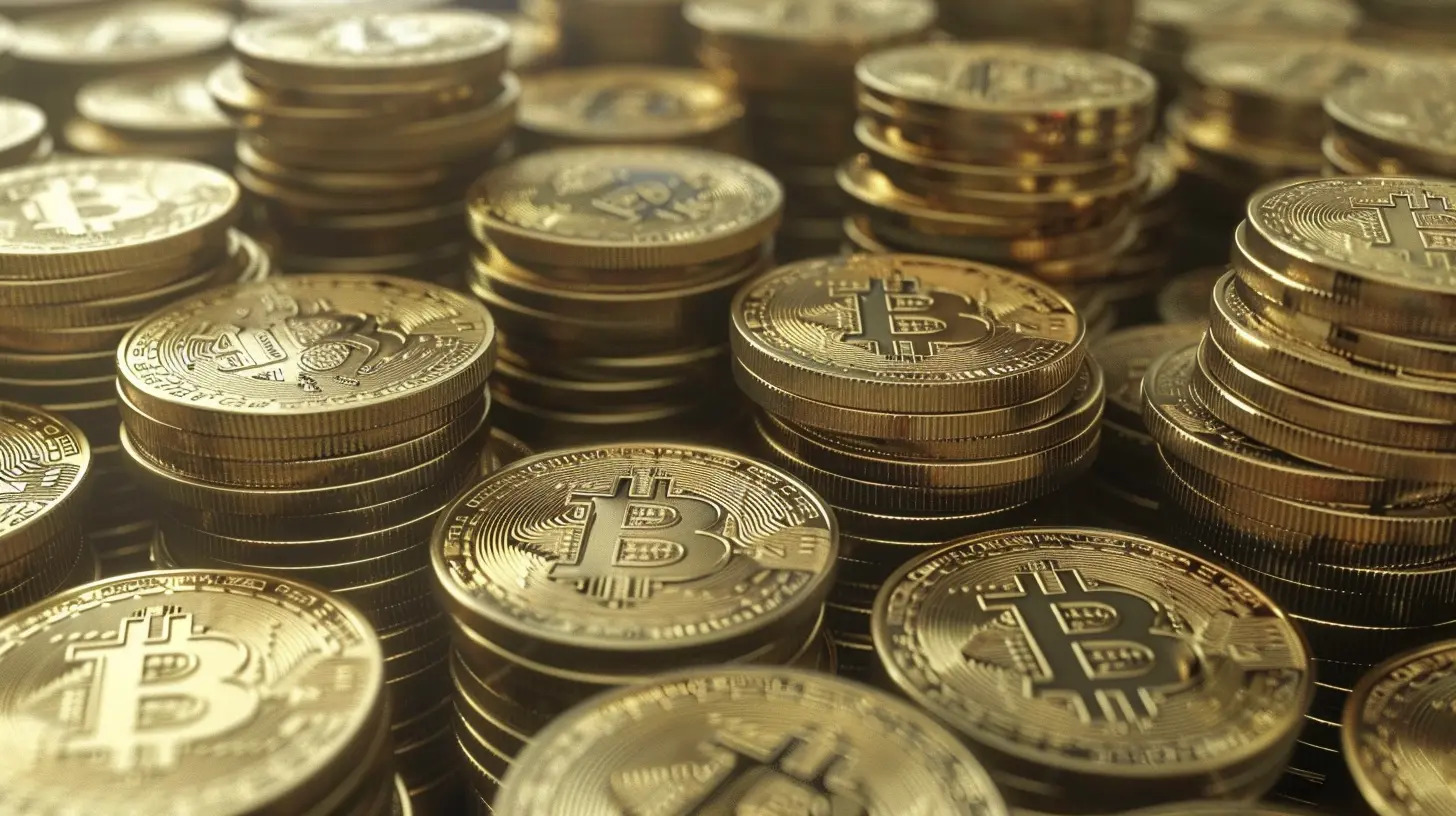Beyond Bitcoin: Exploring New Financial Products in the Crypto Space
22 October 2025
When people think of cryptocurrency, Bitcoin is often the first thing that pops into their minds. Honestly, it’s hard to blame them. Bitcoin is the OG of the crypto world, the one that started it all. But here’s the kicker – the crypto space is evolving at warp speed, introducing far more innovative and intriguing financial products than just Bitcoin. We’ve moved beyond the simple idea of digital money. Nowadays, the crypto world is full of new financial products that are shaking up industries, making waves, and giving traditional banking systems a serious run for their money.
In this article, we'll dive into the world of emerging financial products in the crypto space. From decentralized finance (DeFi) to stablecoins, NFTs, and beyond – there’s a lot to explore. So, buckle up and get ready to go beyond Bitcoin!

What’s Driving Innovation Beyond Bitcoin?
Before we jump into the nitty-gritty, let’s understand why the crypto space is blossoming with new financial products. The truth is, Bitcoin was a groundbreaking invention, but it has limitations. Its value is highly volatile, and its functionality is restricted mainly to being a store of value or medium of exchange. But the underlying technology – blockchain – has so much more potential. Developers, innovators, and enthusiasts saw opportunities to build on that foundation and create more sophisticated products.Think of it like this: Bitcoin laid the groundwork, but now we’re building skyscrapers on top of that foundation. The crypto world is evolving, and the demand for new, more useful financial products keeps growing. People want more than just a digital currency – they want financial systems that are decentralized, transparent, and accessible to everyone.

Decentralized Finance (DeFi): A Revolution in Finance
If you’ve been following the crypto world even a little, you’ve probably heard of DeFi. It’s short for Decentralized Finance, and it’s one of the most exciting innovations to come out of the crypto space.What is DeFi?
DeFi refers to a collection of financial services and products that are built on blockchain networks, primarily Ethereum. The goal? To eliminate intermediaries like banks and financial institutions, putting the power directly into the hands of users. DeFi allows anyone with an internet connection to access financial services like lending, borrowing, trading, and investing without needing a bank account. It’s finance for the people, by the people.How Does It Work?
At the heart of DeFi are smart contracts – self-executing contracts with the terms of the agreement directly written into code. These smart contracts live on the blockchain, which means they’re transparent, tamper-proof, and can operate without any human intervention. Imagine lending money to someone without needing a bank or middleman. You trust the code, not a person or institution.Popular DeFi Applications
DeFi has spawned some fascinating products that cater to various financial needs. Here are a few of the most popular ones:- Decentralized Exchanges (DEXs): These allow users to trade cryptocurrencies without a centralized authority. Examples include Uniswap and SushiSwap.
- Lending and Borrowing Platforms: Platforms like Aave and Compound let users lend out their crypto assets to earn interest or borrow against their crypto holdings.
- Yield Farming: This is where users can “farm” or earn rewards by providing liquidity to DeFi protocols. It’s like earning interest on a savings account, but with a higher (though riskier) return.
DeFi is democratizing finance by giving people access to financial services they might have been excluded from in the traditional banking system.

Stablecoins: Stability in a Volatile Market
One of the biggest criticisms against cryptocurrencies like Bitcoin is their volatility. One day, prices are soaring, and the next, they’re plummeting. Enter stablecoins – the more grounded cousin of traditional cryptocurrencies.What Are Stablecoins?
Unlike Bitcoin or Ethereum, which can be highly volatile, stablecoins are designed to maintain a stable value. They achieve this by being pegged to a reserve asset like the US dollar, gold, or even other cryptocurrencies. In a sense, stablecoins combine the best of both worlds – the efficiency of crypto with the stability of traditional fiat currencies.Types of Stablecoins
There are different types of stablecoins, each with its own mechanism for maintaining stability:- Fiat-Collateralized Stablecoins: These are backed by a reserve of actual fiat currency (usually USD). For example, Tether (USDT) and USD Coin (USDC) are pegged 1:1 to the US dollar.
- Crypto-Collateralized Stablecoins: These stablecoins are backed by other cryptocurrencies, but to manage volatility, they are over-collateralized. DAI is a popular example.
- Algorithmic Stablecoins: Instead of being backed by any asset, algorithmic stablecoins use smart contracts to adjust their supply and demand to maintain a stable price. TerraUSD (UST) was an example, although its collapse in 2022 raised questions about the viability of algorithmic stablecoins.
Why Do We Need Stablecoins?
Stablecoins serve as a bridge between the crypto world and traditional finance. They allow people to transfer value quickly and cheaply without worrying about price fluctuations. They’re also widely used in DeFi protocols for lending, borrowing, and earning interest. For everyday transactions, stablecoins make sense because no one wants to pay for a coffee with Bitcoin, only to find out five minutes later that their coffee just cost them 20% more due to price volatility.
NFTs: More Than Just Digital Art
If you thought NFTs (Non-Fungible Tokens) were just about overpriced JPEGs, think again. While they’ve made headlines for selling digital art for millions, NFTs have much broader applications in the financial world.What Are NFTs?
An NFT is a unique digital asset that represents ownership or proof of authenticity of a specific item, whether it’s digital art, music, a video, or even a piece of virtual real estate. Unlike cryptocurrencies like Bitcoin, which are fungible (one Bitcoin is the same as another), NFTs are one-of-a-kind.NFTs in Finance
You might be wondering, “Okay, but what do NFTs have to do with finance?” Well, NFTs can represent ownership in all sorts of assets, including financial ones. For example, NFTs can be used to securitize real-world assets like real estate, artwork, or even stocks. By tokenizing these assets, they can be bought, sold, and traded on the blockchain, increasing liquidity and accessibility.Additionally, NFTs are being explored in the world of decentralized finance. Imagine using your NFT as collateral for a loan! Some DeFi platforms are already experimenting with this idea, allowing users to use high-value NFTs to secure loans.
Crypto Derivatives: Complex but Powerful
For those who are a little more risk-tolerant, there’s the world of crypto derivatives. Just like traditional financial markets, the crypto world has introduced derivatives – financial products that derive their value from an underlying asset, like Bitcoin or Ethereum.What Are Crypto Derivatives?
Crypto derivatives are agreements to buy or sell a particular cryptocurrency at a predetermined price at a future date. They come in various forms, including futures, options, and perpetual swaps. These products allow traders to speculate on the future price of cryptocurrencies or hedge against potential risks.Why Are They Important?
Crypto derivatives add a whole new layer of sophistication to the crypto market. They provide tools for risk management and speculation, which are crucial for more experienced traders. However, they’re not for the faint-hearted – there’s a high degree of risk involved due to the volatile nature of crypto assets.Central Bank Digital Currencies (CBDCs): The Government’s Answer to Crypto
While private companies and decentralized organizations have been pioneering the development of new crypto products, governments aren’t sitting idle. Enter Central Bank Digital Currencies (CBDCs) – a government-backed digital version of fiat currencies.What Are CBDCs?
CBDCs are digital currencies issued by central banks. Unlike cryptocurrencies like Bitcoin, CBDCs are centralized, meaning they are fully controlled by a government or central bank. Countries like China, Sweden, and even the US are exploring or already developing their own CBDCs to modernize their financial systems.Pros and Cons of CBDCs
CBDCs could bring several benefits, such as faster transactions, reduced costs, and financial inclusion for those without access to traditional banking. However, they could also lead to greater government surveillance and control over personal financial transactions. It’s a double-edged sword, and the jury is still out on whether CBDCs will be a net positive for society.The Future of Financial Products in the Crypto Space
So, where does the future of crypto-financial products lie? The truth is, we’re still in the early stages of this revolution. Every day, new innovations and products are being developed that push the boundaries of what’s possible. From decentralized insurance products to prediction markets and tokenized real estate, the possibilities are endless.The key takeaway is this: Bitcoin may have started the party, but it’s the innovations beyond Bitcoin that are set to change the financial landscape as we know it.
Wrapping It Up
We’ve come a long way from the days when Bitcoin was the only game in town. The crypto space has exploded with new financial products that are not only challenging traditional finance but also offering more accessible, transparent, and decentralized alternatives. Whether it’s DeFi, stablecoins, NFTs, crypto derivatives, or CBDCs, the world of crypto is teeming with exciting products that are reshaping the way we think about money and finance.The future is bright, and it’s clear that the financial revolution is only just beginning. So, whether you’re a crypto newbie or a seasoned pro, it’s time to keep your eyes on the horizon and explore what lies beyond Bitcoin.
all images in this post were generated using AI tools
Category:
FintechAuthor:

Reese McQuillan
Discussion
rate this article
1 comments
Nathaniel Chapman
While Bitcoin played the OG, it’s time to embrace the shiny new kids on the blockchain! From DeFi to NFTs, the crypto space isn’t just about digital gold anymore. Get ready to turbocharge your portfolio with the hottest financial innovations. Let’s ride!
October 29, 2025 at 3:27 AM


